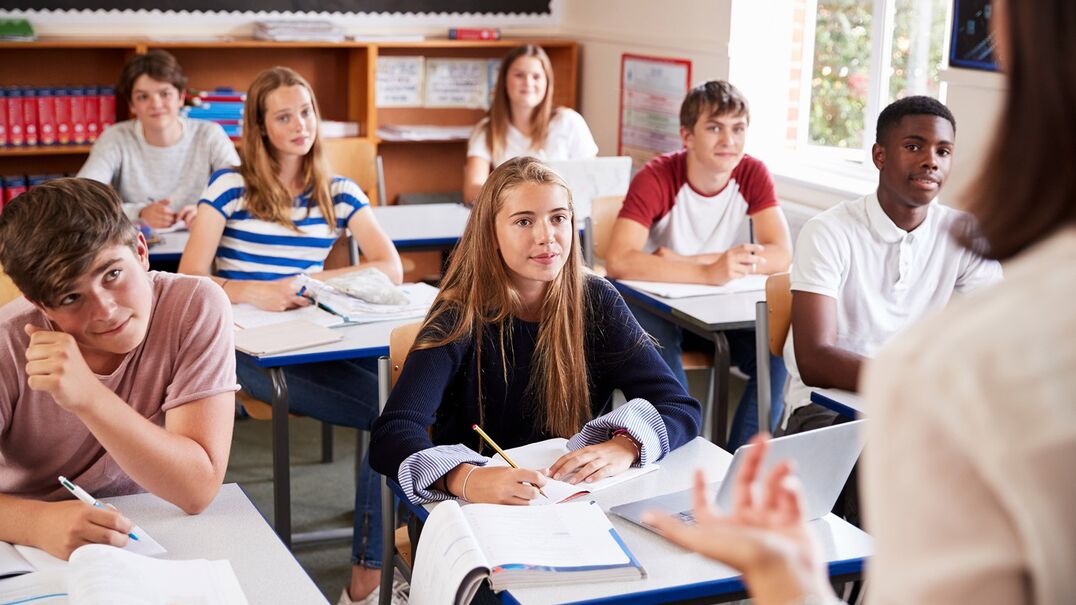Sensory integration
As educators, our goal is to support the wellbeing and instructional needs of our young people so that they can flourish. In our practice, we build proactive pathways toward our wellbeing and instructional goals with a focus on self-regulatory strategies that are age-respectful and stage-appropriate. Understanding the sensory needs of students empowers us as educators to proactively design instructional rhythms and routines that support the educational and prosocial needs of all students.
Sensory integration allows us to understand what we experience. Sensations are “food” or nourishment for our nervous system. When we walk into a new building, our senses are processing the information we need to make sense of our new environment. Our brain organises the information that our senses detect: taste, sight, hearing, touch, movement, gravity and position. Our brains then “direct traffic” to the information and select what to focus on.
This process allows us to act or respond to the situation that we are experiencing in a purposeful manner known as an adaptive response. This unconscious process forms the foundation for academic learning and social behaviour (Ayres et al., 2018).
Two theories we can consider when thinking about the use of fidget tools in the classroom environment are Sensory Processing Theory (Dunn, 2007), which suggests that some individuals require sensory simulation to perform optimally, and Cognitive Load Theory (Choi et al., 2014) which contends that attention is a limited resource.
Sensory Processing Theory
Consider the young people you work with. Some will need to intensify their sensory output by having a colder classroom or access to background music. Some may become more engaged learners when moving in the classroom. In contrast, others will prefer quieter classrooms, low lights, minimalist furniture, and subtle wall embellishments to meet their sensory needs.
The basis of Sensory Processing Theory is that to perform optimally, different individuals have different sensory needs for simulation and arousal (Dunn, 2007). Although this theory has been applied to young people with Autism or ADHD, Dunn believes that the spectrum of sensory needs applies to all.
Our goal at Berry Street is to empower young people to understand how they can proactively meet their own sensory needs when learning. This requires teachers to responsibly and systematically share differentiated sensory strategies with their students. Taking a whole-class, explicit teaching approach can demystify the use of sensory strategies and fortify a culture of proactive self-care for learning.
Your mission is to teach them all. By being aware of each student’s sensory profile we can reach all types of learners by crafting instructional lessons that provide multiple means of expression and engagement.
Active and passive self-regulators
Dunn identifies that there are both active and passive self-regulators. Active self-regulators will seek to meet their own needs or even remove themselves from situations. Some young people may ask for a break or will wander around the classroom to meet their sensory needs which may be distracting and annoying to others.
Passive self-regulators will remain in uncomfortable situations and may need support to identify how to meet their sensory needs.
All young people need to be able to articulate their needs to benefit from having pre-planned strategies ready to use in moments of difficulty. At Berry Street, we enthusiastically promote the use of a Ready to Learn plan for every student. This encourages young people to identify and use strategies that support them to engage and learn.
Tools – not toys
All students benefit from movement while learning. Our job is to support everyday exploration, so students know what movement is available to them with your consent and encouragement. Sensory processing theory suggests fidget tools and other sensory modifications can support young people to be in their optimal range for learning.
Pedal exercisers, textured stress balls, stability discs, weighted blankets, noise cancelling headphones (during quiet work periods), putty, soothing textures and hand exercisers can all provide support in a classroom. They supplement sensory information (visible, tactile and audible) in a regulated and non-disruptive manner that is suitable for a classroom environment.
Cognitive Load Theory
Cognitive load is the theoretical demand or overall load on an individual’s cognition created by interactions between the environment, the learner, and the task (Choi et al., 2014).
Consider some young people that you work with who, when given a task to complete, act-in or act-out rather than complete the task. We understand that behaviour communicates a need and when we unpack what may be happening for the young person, we can reflect on the cognitive load that they may already be carrying.
There are many factors that may add weight to the load including individual personal capacity, the quality of sleep a young person has had, their own personal disposition, mental load, and the overall complexity of the task demand. We can also consider the learning environment and unknown pressures that may exist for a young person on a given day.
A young person’s ability to learn and perform is impacted by the ways in which all these components interact with each other. As educators, it is important to recognise that attention is a limited resource.
Cognitive load theory (Choi et al., 2014) encourages us to deliberately design learning that does not overload a student’s capacity to think and focus. We avoid unnecessary additional information for them to process.
Sensory tools can add to a young person’s cognitive load by adding additional load to their environment and that of others in the room. Depending on the day, the task and the environment, this could add additional weight and limit the resources that your students have for learning and engagement.
Since we all depend on all our senses working together, we can become uncomfortable when we find ourselves without predictable, familiar sensory information (Ayres et al., 2018). Classrooms that are calm, routine rich and minimalist in furniture and layout support all young people.
Recommendations to support the sensory needs of all students
- trial sensory and fidget tools and be intentional in how they are used. Check in with young people to gauge their effectiveness. Provide clear boundaries on how they are to be used in your classroom, being mindful not to add additional cognitive load to young people and others around them.
- develop whole-school instructional routines to support the cognitive load of young people. Routines are practiced and rehearsed and therefore they do not add to a student’s cognitive load in the way that a new activity might do.
- consider class transitions, particularly after unstructured times like recess and lunch. Provide mindful opportunities for students to become present, centred and grounded at the beginning of lessons. Minimise the chaos and congestion that can occur after unstructured time. Create a “soft start” for your instructional time by helping young people settle so that every student is ready and able to engage in the explicit teaching component of your class.
- consider the length of the explicit teach time and create multiple and purposeful opportunities for young people to respond to learning. We find that explicit teaching time is critical for student success, but it only works if the students are regulated enough to listen. Plan strategically for lessons that are likely to engage all learners.
- consider structured and non-distracting ways to support students who may require movement breaks. Gallery walks, literacy circles, carousel conversations, group and individual work opportunities, scheduled quiet time and group discussions are all examples of instructional routines that can support our learners’ sensory needs without adding to their cognitive load.
- post schedules on whiteboards and utilise the learning intentions and success criteria to clarify your expectations of the learning and to reduce the cognitive load. Refer to these often in the lesson to reassure young people as they move through the learning.
- when students present in dysregulated ways, understand that behaviour communicates a need. When young people return to a state of calm, ask them what they may have needed during the session so that their needs can be accommodated for in future classes.
- include Brain Breaks that support both bottom-up and top-down regulation. Desk top drumming, physical exercise, mindfulness and box breathing, are just a few examples of Brain Breaks that can support your student’s ability to re-focus on learning.
- use a journal for students to identify moments in the session where a young person felt that they needed a break and what they needed to meet their sensory needs.
- consider using “Book Breaks” (Witter, 2013) for young people to take a timed “break” during your session.
- remember, that you are the most effective strategy in the room! Promote self-awareness by modelling how you are feeling and explicitly showing your students the strategies that you use to help bring you back into an optimal learning zone.
An improved capacity to focus and attend is a life skill that can benefit our students in, and well beyond, our classroom walls. We can empower our young people by promoting student voice, so that young people are encouraged to articulate the strategies that help them experience success as learners. We are then truly setting them up for success for now and in the future.
By Gloria Zahra, Consultant, Berry Street Education Model
Ayres, A. J., Robbins, J., Mcatee, S., & Pediatric Therapy Network. (2018). Sensory integration and the child: understanding hidden sensory challenges. Western Psychological Services.
Brunzell, T., & Norrish, J. Creating trauma-informed, strengths-based classrooms. (2021). Jessica Kingsley Publishers.
Choi, H., van Merrienboer, J. J. G., & Paas, F. (2014). Effects of the physical environment on cognitive load and learning: Towards a new model of cognitive load. Educational Psychology Review, 26(2), 225-244.
Dunn, W. (2007). Supporting children to participate successfully in everyday life by using sensory processing knowledge. Infants & Young Children: An Interdisciplinary Journal of Early Childhood Intervention, 20(2), 84-101.
LeAndra Kriescher, S. (2020). The Effects of Fidgets on Attention and Learning of College Students. University of Northern Colorado.
Witter, M. (2013). Reading without limits. Jossey-Bass.



